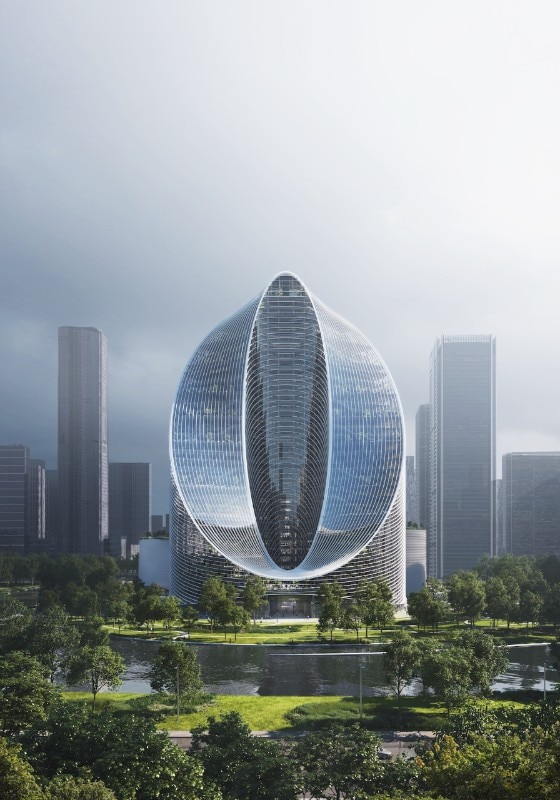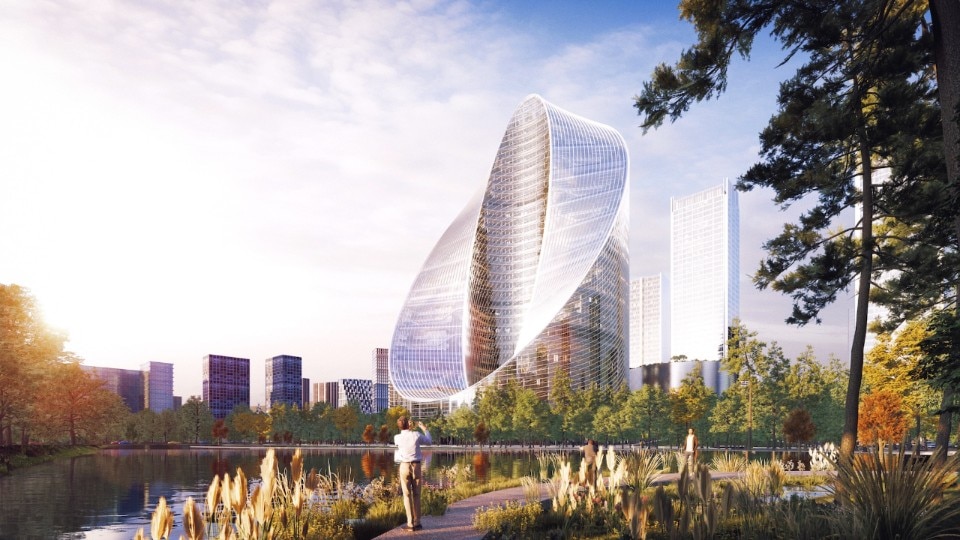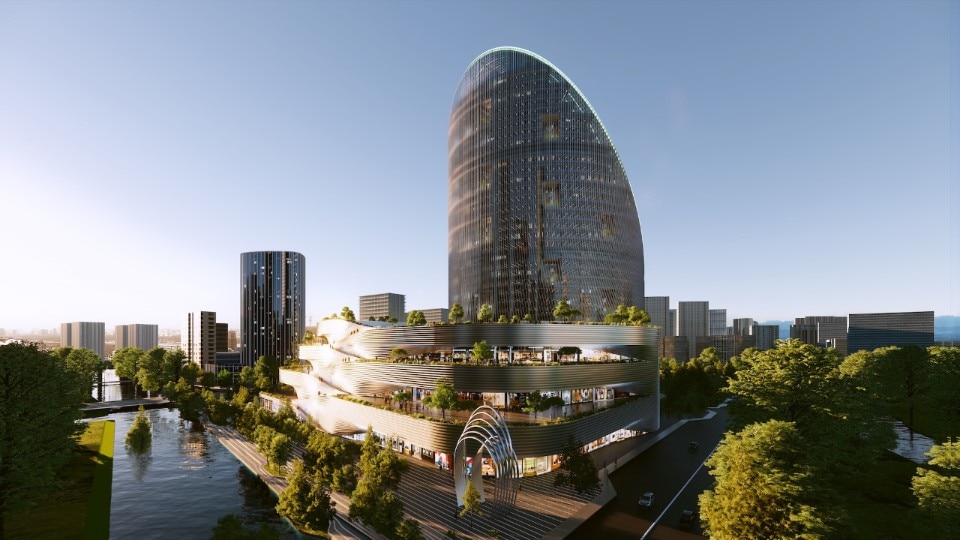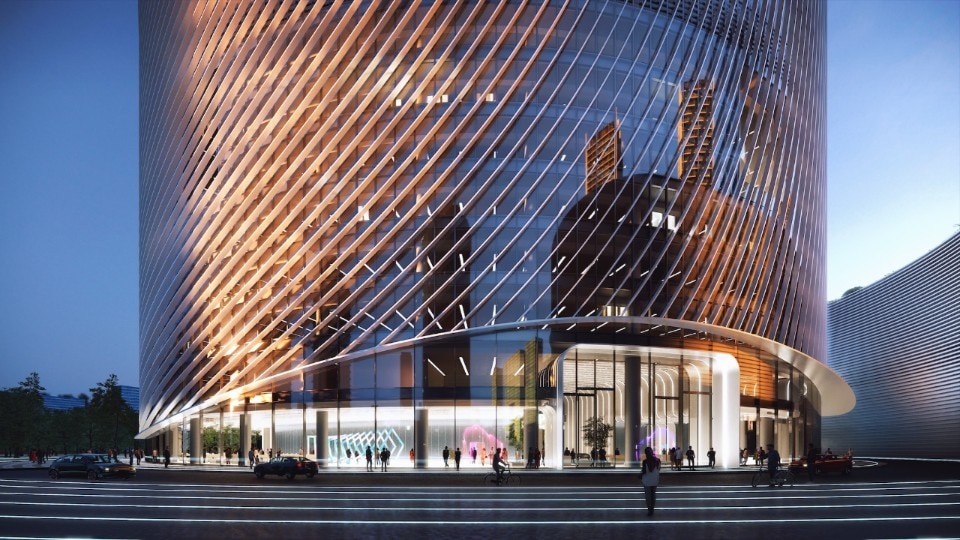Just over a year ago, a spaceship touched down in the middle of a construction site – the upcoming data center of Oppo, the prominent Chinese tech brand. We’re on the outskirts of Shenzhen, a sprawling metropolis that mirrors the larger and more renowned Hong Kong within the People’s Republic. Just a twenty-minute train ride separates the two locations. More precisely, we’re in Binhaiwan Bay, the hub projected to house an astonishing 100 million people by 2030. A quick look around Google offers a sneak peek into the future landscape, characterized by projects like the Industrial Park, perfectly fitting into the present-future narrative we’re becoming accustomed to – lots of towers, lots of green spaces, much glass, suspended walkways, and minimalist orthogonal designs. Shenzhen, aspiring to be the supercity of tomorrow, is pampering itself up. Also near Oppo’s cutting-edge data center, renderings show the development of a residential district with avant-garde designs.

The data center entrance is massive and sleek in brilliant white. As you enter, your footsteps echo off the reflective floor, dwarfed by the futuristic and immaculate curves of a spaceship. This is no ordinary ship; it is the gateway to the future, and you are but a speck in its grand design. At its core is AndesBrain, Oppo’s digital powerhouse – the brain of this high-tech spaceship. Inside the server rooms, a subtle hum is the only sound. Up on the roof, a rainwater collection system enhances efficiency, while an immersion cooling system keeps the machines running efficiently, saving a whopping 45 percent of energy.
Every bit of power here is pure renewables. Don’t be fooled – the digital world we navigate on our devices is not energy-free as you might think. In fact, data centers gulp down 3% of the world’s energy, and that number’s only climbing.
A flourish of architectural marvels
In Shenzhen’s western district, at Oppo’s offices in the CRC Tower – known as the Spring Bamboo, an Eastern take on the Gherkin – on a shelf in a spacious room filled with smartphones and the nostalgic Amarcord mp3 players (Oppo’s humble beginnings) are the models that are already driving and are destined to fuel the unstoppable rise of the Chinese brand, number one in the country in the second quarter of this year.
There’s the R&D headquarters, a creation by BIG that architectural journals have jokingly compared to the Eye of Sauron. The upcoming Zaha Hadid Architects complex in Shenzhen promises a parametric dream of vertical glass and metal torpedoes, seemingly molded by hand from clay. Other spaceships have landed in China as well – KPF’s designs grace the Chongqing campus and R&D center in Changan, while Gianni Botsford Architects adds a 42-story tower in Chengdu to the mix. This is more than just construction; it’s a phenomenon. When companies take a giant leap forward, their architecture often speaks the narrative, sometimes even before their products do. Oppo is taking that leap, right now.

Journalists and creatives from around the world, from Spain to the Philippines and Poland to Australia, gather at Oppo’s offices in Shenzhen. Here, in Nanshan, once a bay, now a bustling construction hub, they witness the latest in virtual and augmented reality, with a special focus on health applications. A city constantly under construction, Shenzhen now boasts a staggering 13 million residents, a massive leap from its modest one million population in the 1990s. Designated a special economic zone in 1979, it was the tech boom that truly defined Shenzhen’s destiny, earning it the nickname “Shenzhen Speed” in China due to its rapid growth.

Shenzen, between the present and the future to come
Several floors below, traffic moves seamlessly. A sea of green license plates marks the electric vehicles on China’s streets. Getting a license plate for a conventional car? That’s a long wait, stretching up to eight months. Step into Xpeng’s electric car shop, and you’ll find the first flying car approved by the Chinese aviation authority proudly on display. But at the traffic light, in the midst of this high-tech landscape, a person with a flag stands, signaling the green light with a whistle. Next to Oppo’s futuristic AI displays, it seems like a relic from a bygone era – a stark reminder of a time when people still clocked in for work in a world that’s rapidly evolving.
Oppo’s journey continues, rooted in its audio heritage, now embodied in the stellar Enco line. The brand’s origins can be traced back to digital music players, with the first X3 making its debut in 2005. The story began in Dongguan, just north of Shenzhen, where Oppo’s expansive campus seamlessly integrates buildings, green spaces and sports fields. Inside this hub, advanced labs, including the one dedicated to perfecting mobile phone cameras, operate with remarkable automation. Imagine robotic machines navigating sixteen detailed scenarios – cafes, supermarkets, dining halls – and capturing photos and selfies with unparalleled precision beyond human capabilities.

In the smartphone museum
But there are also other labs here, testing everything from NFC capabilities to smartphone water resistance. It is also home to one of Oppo’s smartphone production facilities. On average, it takes half an hour to assemble a phone, and about the same to get it to the testing stage. A sleek glass wall traces the assembly line. Behind it, Oppo’s crew meticulously crafts the most common technological gadget of our era – piece by piece. Stroll along this tech showcase, observing the intricate process from one station to the next through different corridors – a bit like onlookers in front of a construction site. They make cell phones here, but using them is forbidden. There is no way to communicate with those on the other side of the glass, busy with their work.

As in a museum, panels narrate the journey from lifeless materials to our indispensable smart companion. A companion that is set to get even smarter, thanks to a sophisticated service system. We’re talking AndesBrain and AndesGPT – Oppo’s cutting-edge language model. According to benchmarks, it’s among the best out there, complete with the company’s voice assistant, Breeno.

Welcome to a future dominated by alternative intelligences. To truly grasp it, understanding Shenzhen is probably unavoidable.
All images courtesy Oppo, unless otherwise stated.
Opening image: Oppo's upcoming HQ in Shenzhen, by ZHA

















